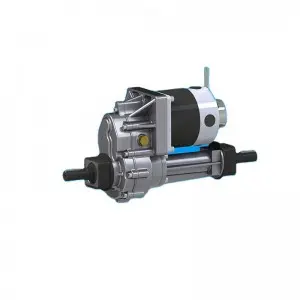When it comes to auto mechanics, terms like “transaxle” and “transmission” often confuse even the most seasoned car enthusiast. Are they the same thing, or do they serve different purposes? In this blog, we will dive into the world of automotive engineering and understand the difference between transaxles and gearboxes. In the end, you’ll have a clearer understanding of these basic components, allowing you to make more informed decisions about your vehicle.
The basics of transaxles and gearboxes:
To understand the difference between a transaxle and a transmission, it is crucial to understand their basic function. The transmission is responsible for transmitting the power generated by the engine to the wheels of the vehicle. By using different gears, it allows the vehicle to travel at different speeds while optimizing engine performance. A transaxle, on the other hand, combines the functions of a transmission and a differential in one unit.
The relationship between the transaxle and the transmission:
In most vehicles, the transaxle is usually in a front wheel drive configuration. The engine’s crankshaft is directly connected to the transaxle, which then distributes power between the two front wheels. This layout ensures better weight distribution and improved handling. Conversely, gearboxes are more commonly found in rear-wheel-drive layouts, since the engine and gearbox are separate components connected by a drive shaft.
Composition and structure:
A transmission is made up of several key components, including the clutch, torque converter, and gears. These components work together to provide power and allow the driver to shift gears manually or automatically. A transaxle, on the other hand, contains additional elements, such as a differential, to distribute torque between the front wheels. This arrangement facilitates smooth and efficient cornering.
Pros and Cons:
A significant advantage of using a transaxle is its compact design, which eliminates the need for a separate differential assembly. This compactness allows automakers to maximize interior space while improving fuel efficiency due to weight savings. Additionally, the transaxle sits above the drive wheels for enhanced traction in slippery conditions. However, a transaxle may be less suitable for high-performance vehicles because its lighter construction may not be able to handle excess power or torque as efficiently as a transmission.
In summary, while transaxles and transmissions have similar goals of transferring power from the engine to the wheels, they differ significantly in function and structure. A transaxle combines the functions of a transmission and a differential and is primarily used in front-wheel drive vehicles. Knowing these differences allows us to understand the complexities of automotive engineering and make more informed decisions when it comes to our vehicles.
Post time: Sep-01-2023


